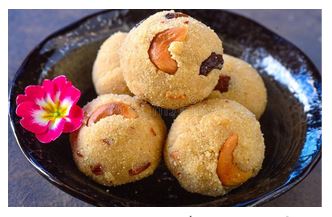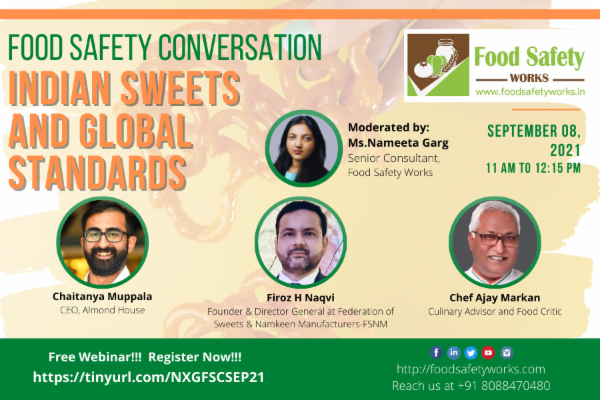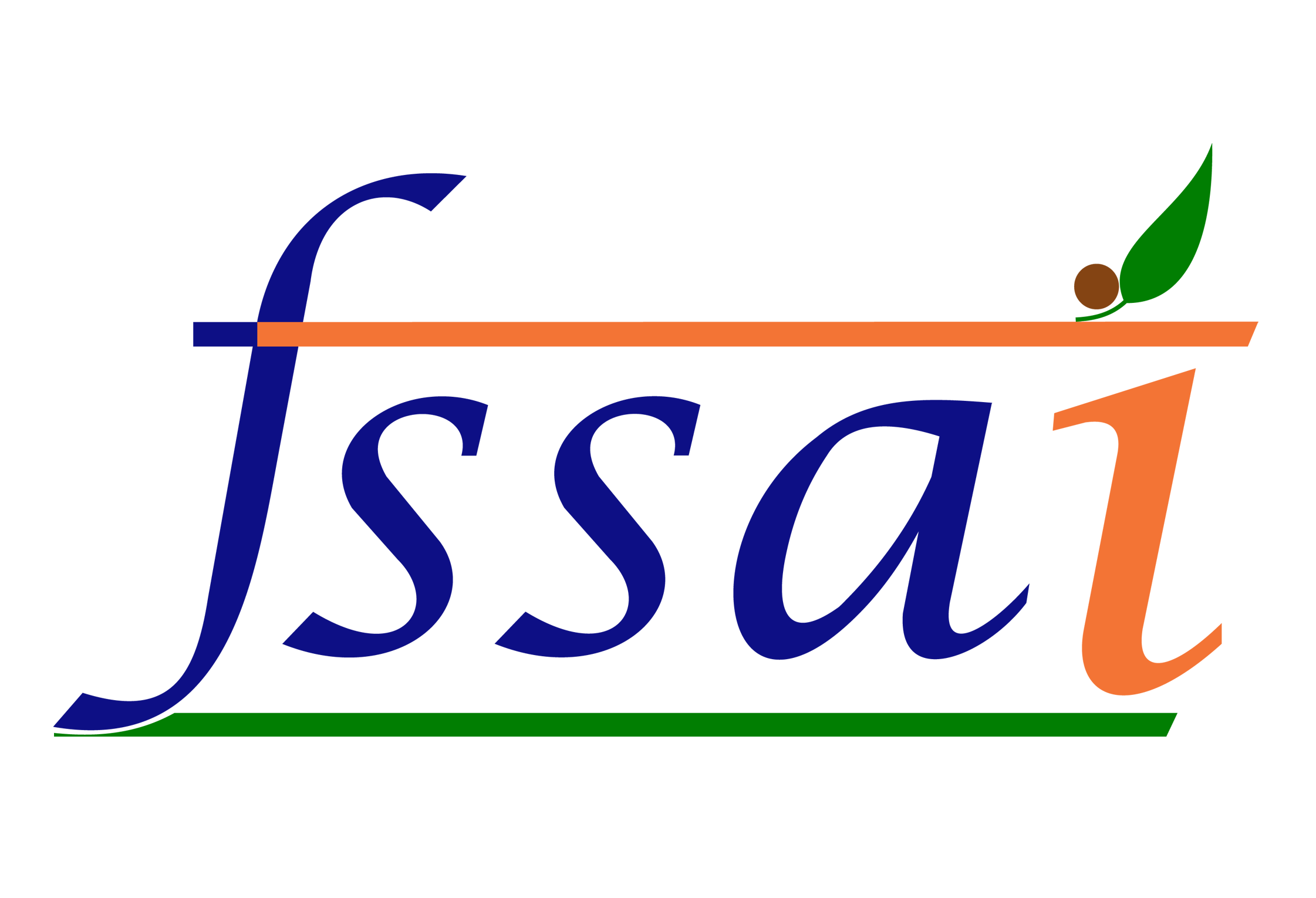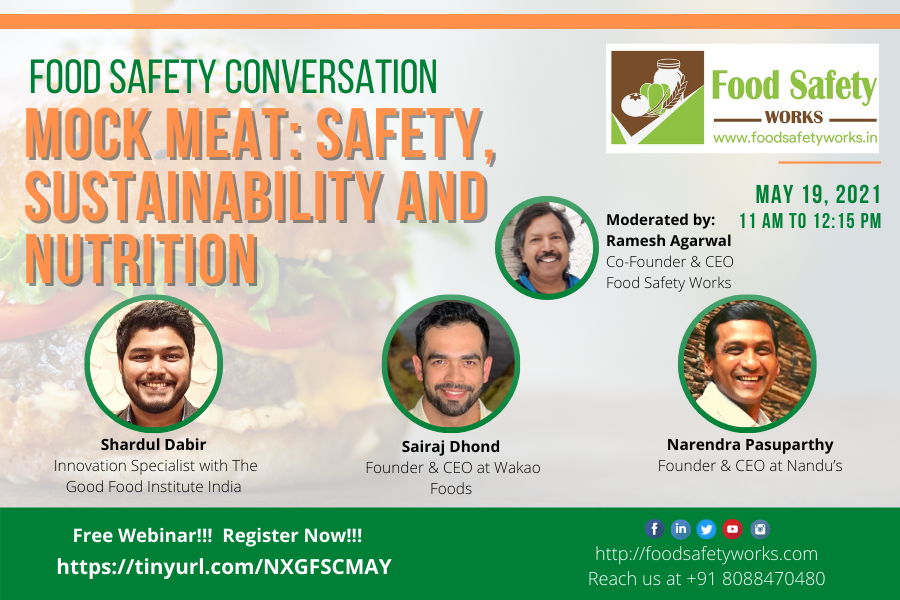“Quality is never an accident; it is always the result of high intention, sincere effort, intelligent direction and skillful execution; it represents the wise choice of many alternatives, the cumulative experience of many masters of craftsmanship. Quality also marks the search for an ideal after necessity has been satisfied and mere usefulness achieved.” – John Ruskin
Our conversation last month featured some masters of craftsmanship, who embody quality in their intention and work.

September’s Food Safety Conversation focused on ‘Indian Sweets and Global Standards’. With the festive season approaching across the country, our speakers discussed the evolution of the sweet industry, modern trends, nutrition, food safety and increased awareness post pandemic.
Our panel comprised of members representing different stakeholders of the industry. We had Mr. Chaitanya Muppala, CEO of Almond House, Mr. Firoz H Naqvi, Founder & Director General of Federation of Sweets & Namkeen Manufacturer and Chef Ajay Markan a Culinary Advisor & Food Critic.
Indian sweet making, purchase & consumption patterns have evolved considerably over the years. From being traditionally home-made and neighborhood halwai bought to gourmet, designer packaged, bought online and next-gen friendly.
Our panelists agreed that trends are iterative and driven by what consumers want and a desire to get a wider & younger audience.
The pandemic has also led to innovations, for example the DIY Kits by Almond House, for brands to continue to remain engaged with customers through safe, hygienic, family activity-based offerings while staying compliant to regulations on food delivery.
Indian sweet industry is one of the oldest industries and has always been traditional and family owned. The Mithai (Sweet) and Namkeen industry is considered the ‘engine of the food processing industry’ in the country, and Indians some of the oldest food processors of the world.
The younger generation and new-age entrepreneurs are however leading from the front and taking the traditional family businesses forward with advancements in technology, packaging, marketing, hygiene and safety awareness while retaining the traditional quality and nostalgic elements of their brands.
These advancements and modernization in the industry also led to leaders coming together to form associations such as Federation of Sweets & Namkeen Manufacturers and start publications and events such as Mithai & Namkeen Times, World Mithai & Namkeen Convention to bring together the fraternity and provide them a voice and an avenue for information exchange and support. With overwhelming response from the first event, the federation is now well into its 5th year and growing from strength to strength.
A shift from old to new however is never easy, particularly in one the oldest and most traditional industries. The earlier generations had a traditional way of working and our panelists and creating a momentum for change was challenging initially, but over time it became a part of culture. At the Almond House, they led from the front and got the team to understand that handling less is more and that this leads to safer products and longer shelf-lives.
The size of the sweet & namkeen industry is about 1-2 Lakh crores in the country, with a mix of small, medium & large manufacturers. Over the past few years, even from the smaller cities across the country, manufacturers and retailers have obtained best of facilities, machinery, showrooms and are also investing more in packaging, branding and expansion.
Similarly, halwais & sweet makers in the catering industry who are usually not technically or professionally qualified have also been trained over time and provided exposure to newer trends, safe practices.
We also discussed trends of healthy and immunity strengthening options as sought by customers and how brands, associations and chefs engage with customers.
Our speakers shared views on how recent regulations for sweets are helpful and a good start, but there is still lots to be done to reach the grassroots level and address all components of ‘sweet’ manufacturing.
The conversation closed with discussion on global standards and the relevance in the Indian context, with our speakers sharing their initiatives to bring in transparency and more awareness on standards and best practices, through open kitchen concepts, returning to common sense ‘Mothers kitchen’ principles, and engaging with manufacturers through industry events and global exposure.
You can also view the entire conversation again on the Food Safety Works YouTube Channel by accessing this link,
https://www.youtube.com/watch?v=taFfzxTQvy4






